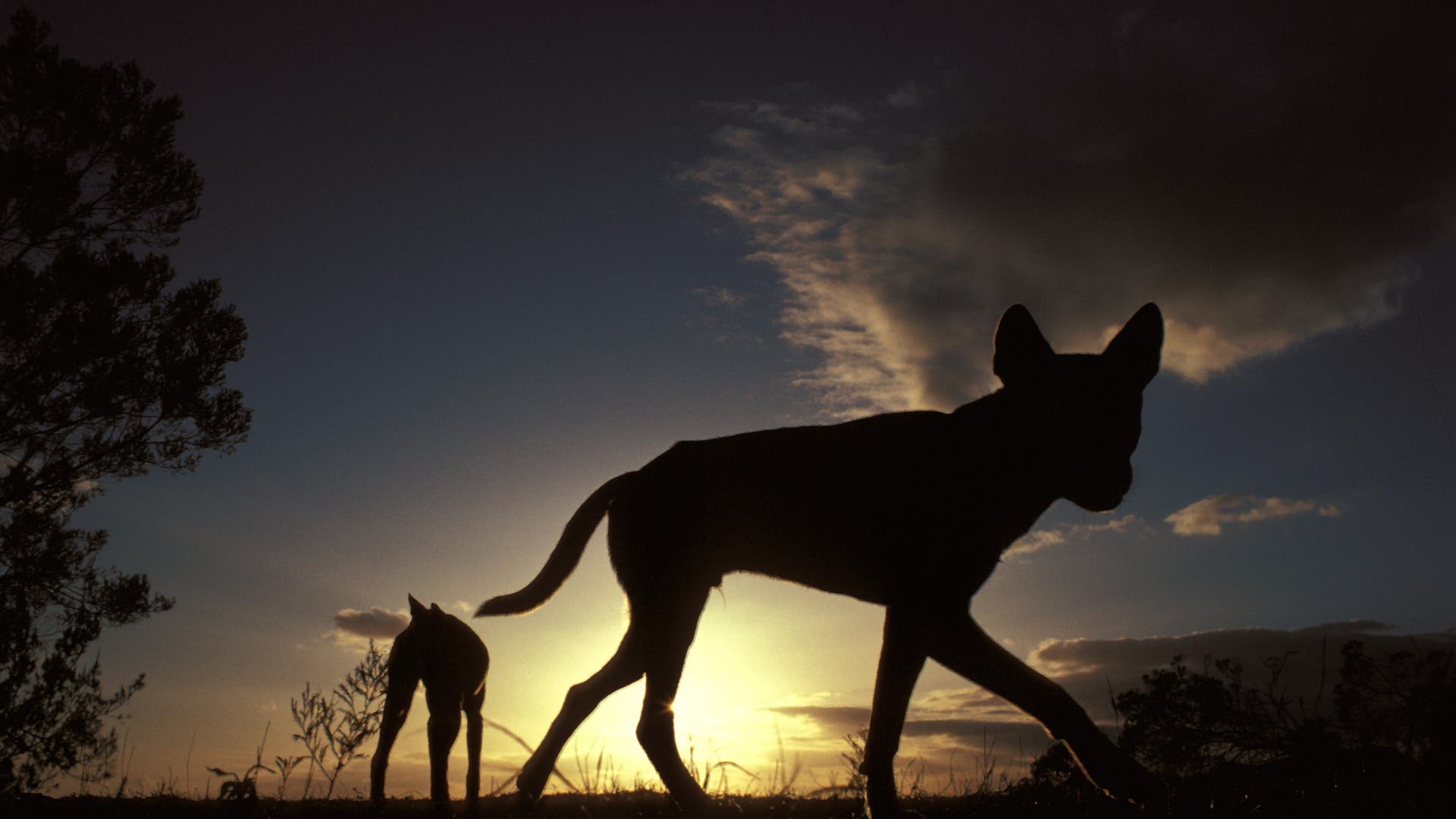Dingos, like humans, came as intruders
When the ancestors of dingoes arrived on the Australian continent about 4,000 years ago, according to fossil discoveries, humans, bats (which may have flown there), and mice that escaped from ships were among the highest mammals (placental) on the continent. All indigenous Australian mammals were marsupials. Dingos came as intruders – like humans.
All the placental animals living there – humans, horses, camels, foxes, cats and dogs – reached the Australian continent by boat. About 125,000 years ago, when sea level was lower than it is today, New Guinea, mainland Australia and Tasmania, including the various islands today, formed the landmass adjacent to the Plains. When land bridges were flooded, the Torres Strait was created between northern Australia and New Guinea about 8,000 years ago, while Tasmania was separated from southern Australia by the Bass Strait about 12,000 years ago. From every island in Southeast Asia or Oceania, the distance to the Australian continent can only be covered by a 100-kilometer cruise – far too far to swim for humans or dogs. The shortest route was north or northwest of Australia or perhaps to Vogelkop, a peninsula off New Guinea. Archaeological finds from the islands of Southeast Asia and Oceania confirm that the peoples living there were intelligent sailors who knew how to use coastal waters and even deep sea water. It wasn’t a cruise to discourage them. Boats made of wood or natural fibers are not well preserved as archaeological finds, but the remains of fish hooks, fish bones, crabs, mussels, turtles, and sometimes marine mammals speak for themselves.
© Alamy / imageBROKER / Jürgen & Christine Sohns (Details)
tiny numbers | The dingoes in this pack on Phillip Island in the Australian state of Victoria have sandy-colored fur and a slim body. They skillfully climb trees, rocks, or other objects and have an unusually good sense of smell to track prey and water.
According to the history of Australia’s oldest site, Madjedbebe in the Northern Territory, anatomically modern humans arrived here about 65,000 to 55,000 years ago – before they invaded Europe and East Asia from their African origins. The Australian continent marked the end point of the first major regional wave of human expansion. Soon after their ancestors left Africa perhaps 70,000 years ago, future Australians must have taken their own path, traversing much of Southeast Asia and its islands, skillfully adapting to marine life and finally reaching Australia. Of course, the early immigrants had no idea the existence of their destination. In any case, they did not have any dogs with them, as they separated from the other inhabitants long before the first four-legged friends were domesticated.
The oldest known records of dingoes on the Australian continent come from Madura Cave in the Nullarbor Plain near the southern coast. The dating of these bones showed that they were between 3,348 and 3,081 years old. As Jane Palm of the University of Western Australia and colleagues suspected in 2018, dingoes only reached Australia recently, even if their supposed arrival point was in the north or northwest of the continent thousands of kilometers from the fossil site. Accordingly, the spread of the dingo from north to south was very rapid – compared to the cats introduced around 1820, which invaded most of Australia within 70 years, or the true domestic dogs of Tasmania, which after the arrival of the first European settlers at the beginning of the nineteenth century from One end of the island to the other in about 25 years.
According to some theories about the evolutionary origin of the dingo, they were domestic dogs brought by sailors from Oceania or the islands of Southeast Asia. But why should you take a dingo or its ancestor on a cruise to an unknown destination? Perhaps as a company – dingo dogs are very lovable – or because they eat trash and thus keep the camp clean. Perhaps also to warn of dangers. The dingo does not bark, but rather howls. Influencers respond with their howls, forming a ghostly chorus that can be heard from far and wide. In addition, the animals can be used as night heating pads and, if necessary, as provisions, although many indigenous people strongly dislike the idea of eating dingoes. However, dingoes are very difficult to train, and unlike dogs, they do not have an innate desire to please humans. So it was almost certain that some of them escaped.
Another point is that there are hardly any fossils of dogs or other dogs over 4,000 years old in Oceania or on the islands of Southeast Asia. So where did the ancestors of the dingo come from? Perhaps from somewhere in Southeast or Central Asia as genetic studies suggest, but conclusive evidence is still pending. Investigations of partial genome sequencing revealed only a few maternal (mitochondrial DNA) and paternal (Y chromosome) lineages, indicating a small founding population. However, the first whole-genome studies yielded 20 haplotypes that were grouped into two groups. As a result, the animals probably came to the country in several waves. Similar haplotypes can be found in modern free-living dogs in Asia. To make matters worse, pet dogs are very keen to mate with dingoes (and also with wolves, coyotes, or jackals). A combination of microsatellite DNA can be used to determine the degree of inbreeding for each individual, but there is no characteristic that clearly states the question: a dingo or a domestic dog?

Communicator. Reader. Hipster-friendly introvert. General zombie specialist. Tv trailblazer

